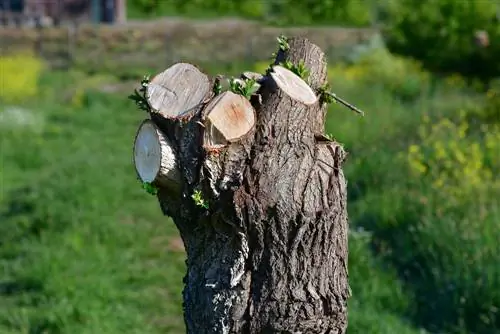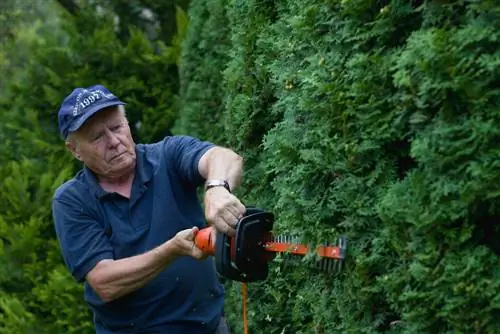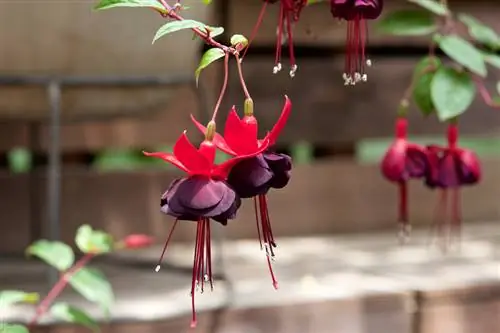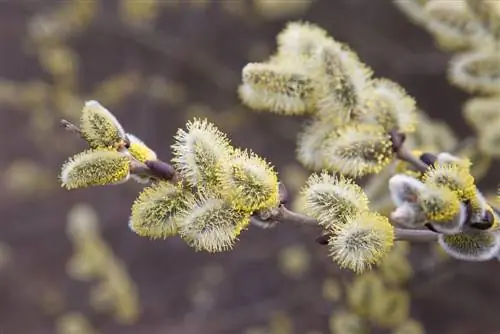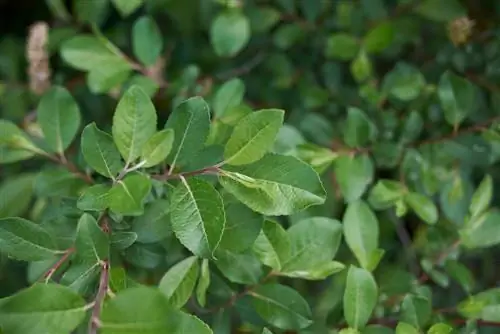- Author admin [email protected].
- Public 2023-12-25 17:45.
- Last modified 2025-01-23 11:22.
A catkin and secateurs get along well. The main thing is that its owner knows exactly when to pick up the cutting tool. This is revealed here and also how much of the branches can fall to the ground.
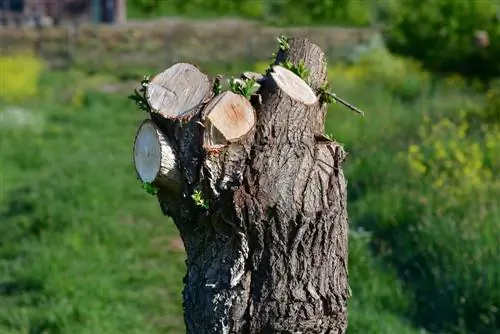
When and how should the catkin be cut?
A catkin should be pruned after flowering in March and April. Use cleaned and disinfected cutting tools. Cut as radically as desired without damaging the thickenings on the branches. After a radical cut, it is recommended to add fertilizer.
The palm catkin is cut-friendly
Palm catkins can develop without cutting if rapid, shade-providing growth is desired. But it is also tolerant of cutting and sprouts up to 70 cm per year. Cutting also drives the tree to flower at a quantitatively high level year after year.
Note:Cutting branches in the wild is prohibited from March 1st to September 30th, as the catkin is protected as an important bee food.
Time depends on flowering
Most trees are cut in early spring. This point in time would be fatal for the catkin because the expected flowering would be destroyed.
- wait to cut until after flowering
- the flowering period is March to April
- cut immediately afterwards
Prepare cutting tool
If the branches of a catkin are still thin, you can probably get by with a pair of secateurs (€14.00 on Amazon). Otherwise you will need pruning shears or a saw. All tools must be prepared professionally:
- Clean and disinfect tools
- no germs must adhere to it
- Sharpen blades for smooth cuts
Cut back radically
Take a careful look at the branches, looking for thickenings. The tree can sprout again from these. You must therefore remain standing and not be injured while cutting. But anything beyond that can be removed boldly. How much you cut back the catkin or even give it a radical cut is up to you.
Tip
Straight-grown branches of the cuttings are well suited for the propagation of the catkin. They are placed in the garden soil or grown in pots. All buds and leaves are removed beforehand.
Cutting pot specimens
Palm catkins can also be cultivated in pots and should also be cut back annually after flowering. If the plant does not receive an equal amount of light from each side, its crown will grow unevenly. That's why the pot needs to be turned regularly.
Fertilize after radical cuts
With the radical cut, we place high performance demands on the catkin. It can only be managed if there is plenty of nutrients to fall back on. Since new growth will start soon, you should give the plant a portion of good fertilizer immediately after cutting.

